Austre BrøggerbreenAustre Brøggerbreen is a complex 5 km-long valley glacier within easy reach of Ny-Ålesund. It descends from several peaks that form the backbone of the peninsula, notably Steenfjellet (737 m) and Brøggertinden (720 m). The glacier tongue is fed by six discrete accumulation basins that feed a broad tongue about 1.5 km wide. The glacier is classed as ‘cold’, with the ice believed to be below the pressure melting point throughout. The glacier is surrounded by spectacular geology, including both sedimentary and metamorphic rocks that were folded during the Palaeogene West Spitsbergen Orogeny. This complex geology is reflected in the different coloured moraines and meltwater streams. |
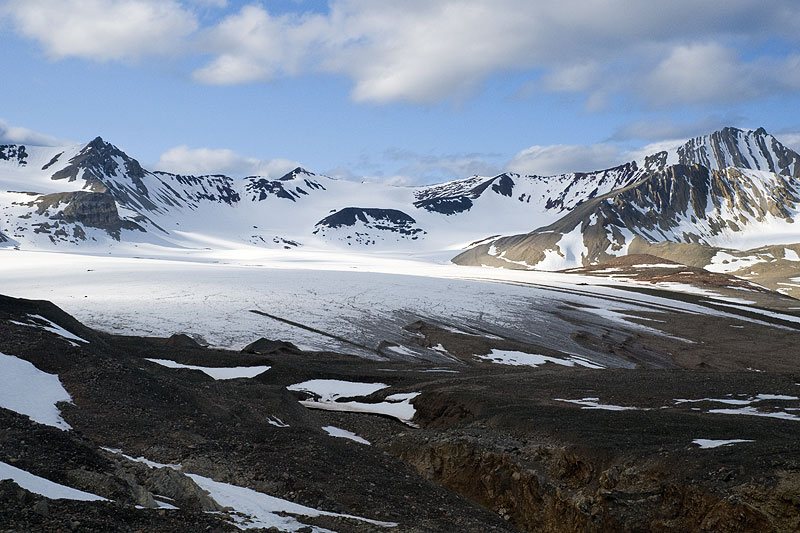 General view of Austre Brøggerbreen from the Neoglacial moraine below the terminus, showing low-angle snout. The peak at the right is Brøggertinden (2009, MH). | 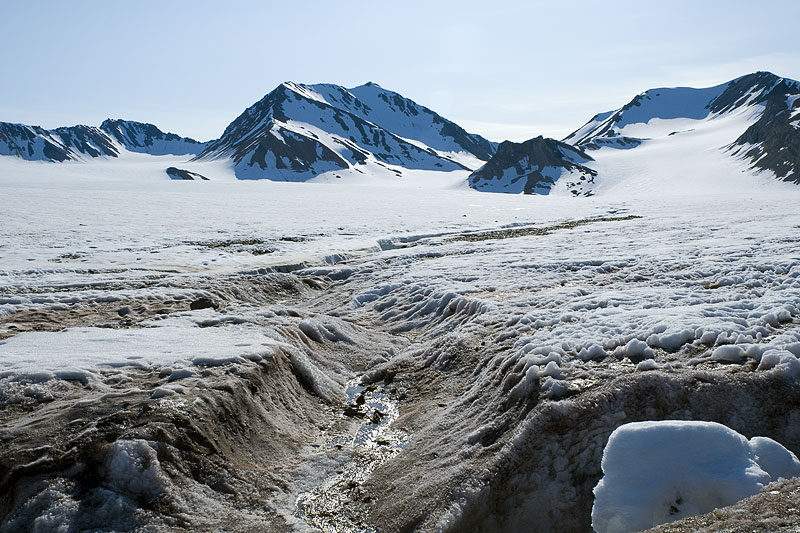 Looking up-glacier along a supraglacial stream to two of the accumulation basins, with Steenfjellet in the background (2009, MH). | 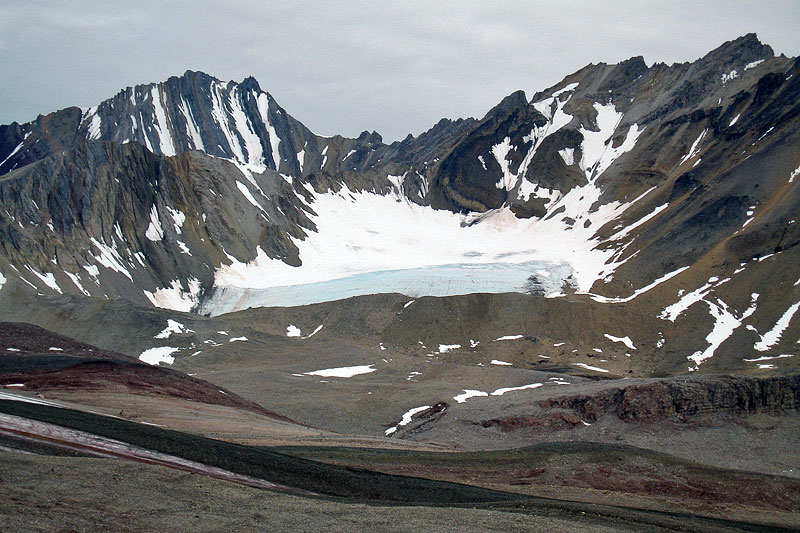 A former tributary cirque glacier of Austre Brøggerbreen, now separated from the main glacier by ice-cored moraine. Brøggertinden is in the background (2009, MH). | 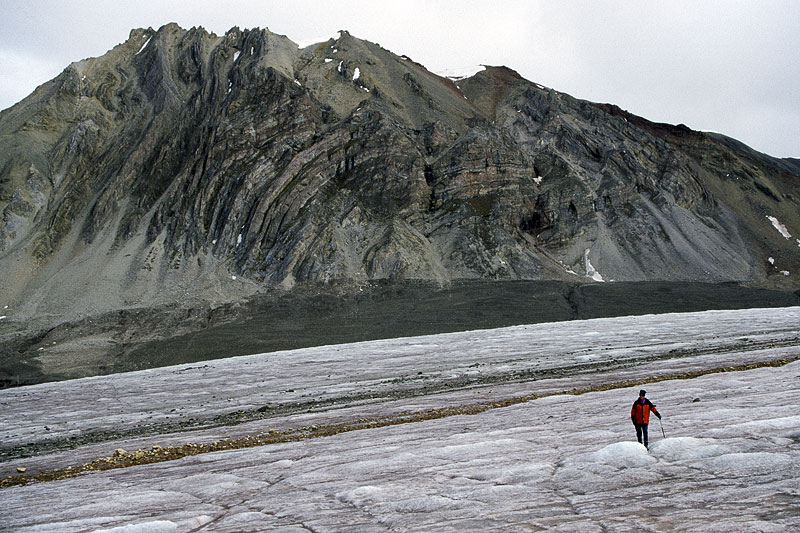 Lower middle section of Austre Brøggerbreen illustrating two medial moraines that denote the boundaries between separate flow units. Palaeogene folding of Carboniferous strata in the background (1999; MH). |
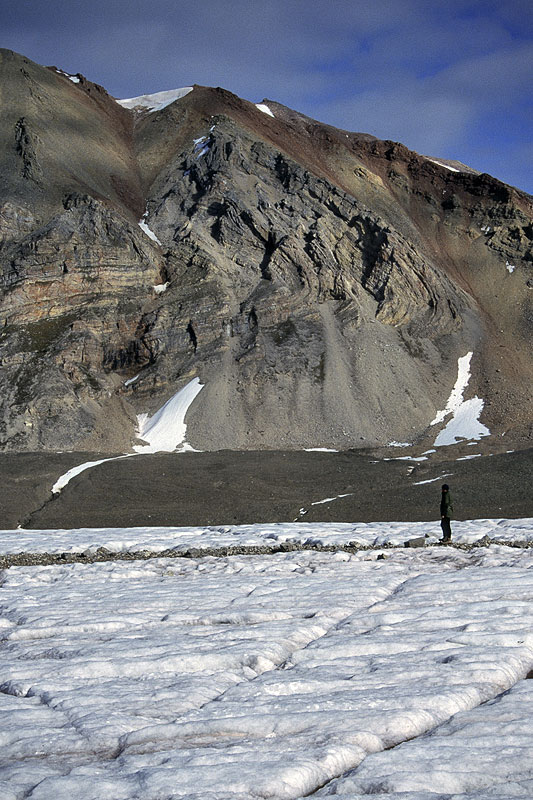 Crevasse traces in Austre Brøggerbreen in the foreground and the hinge-zone of the fold structure in the previous photo. The lateral moraine below the cliffs was formed during the Neoglacial, around 1900 AD (2001; MH). | 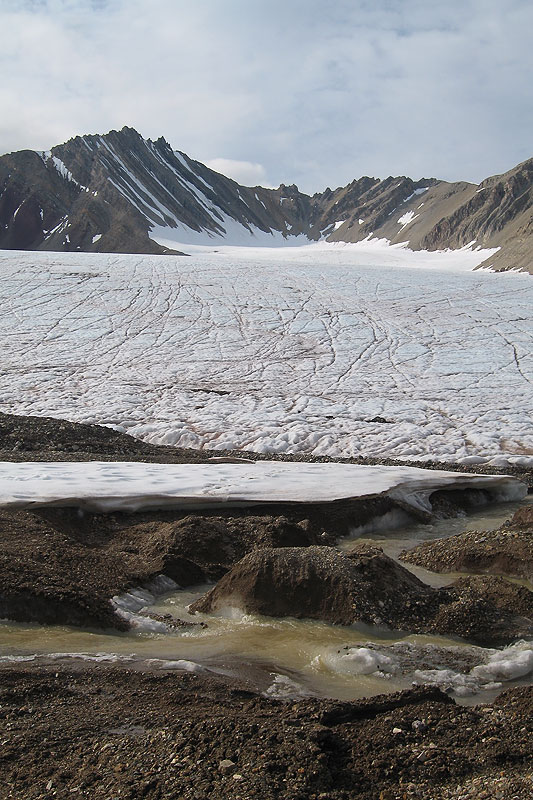 Supraglacial stream leading the eye to a complex set of crevasse traces, derived from a more active phase of the glacier. In the background is Brøggertinden comprising Carboniferous strata folded into a syncline(2009, MH). | 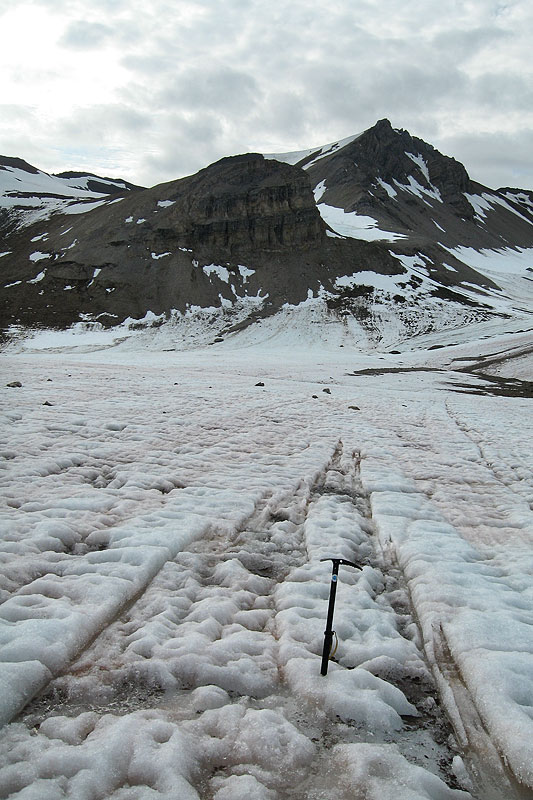 Following the dirty layer in the ice defines a tight (similar-style) fold, illustrating the strong deformation of the original stratification (2009, MH). | 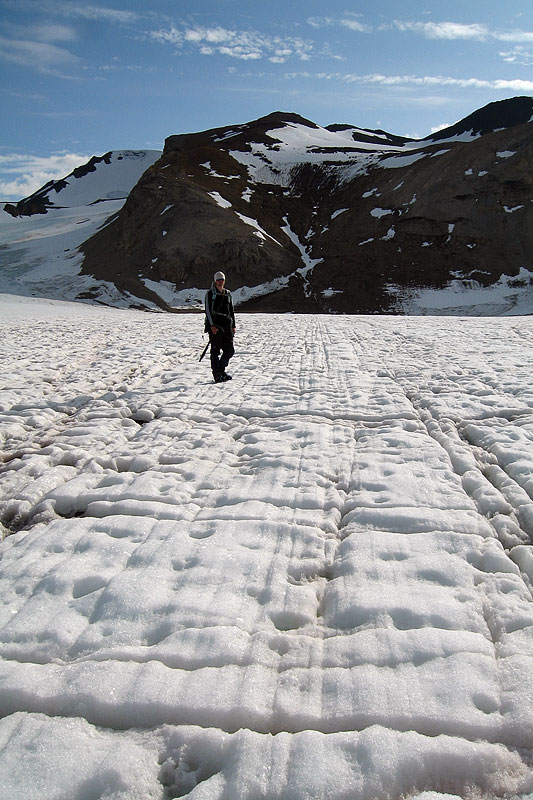 Clean longitudinal foliation with cross-cutting crevasse traces in the middle part of Austre Brøggerbreen (2009, MH). |
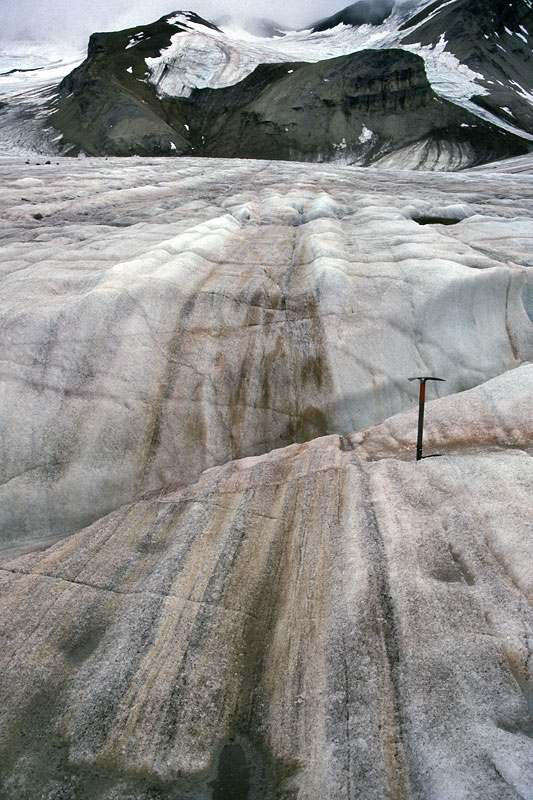 Further down the glacier, the foliation becomes dirty, suggesting a link with the bed (2009; MH). | 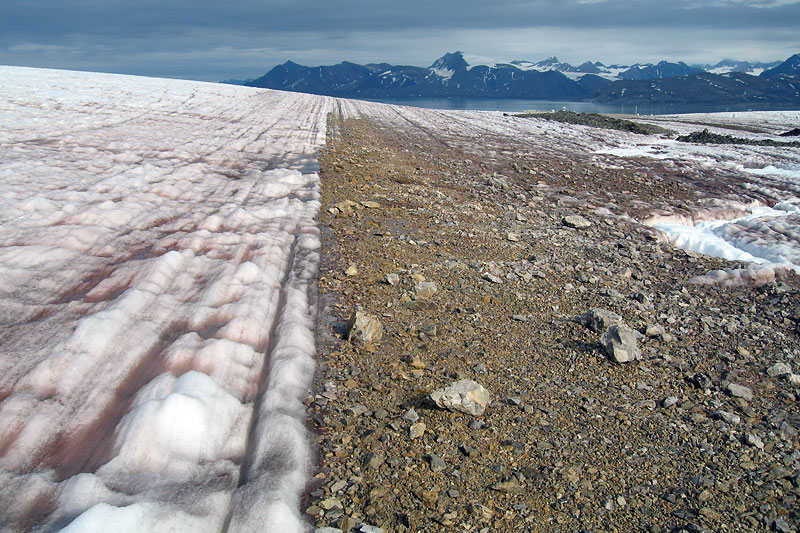 Medial moraines have a close relationship with the foliation, as the close parallelism between the two illustrates here (2009; MH). | 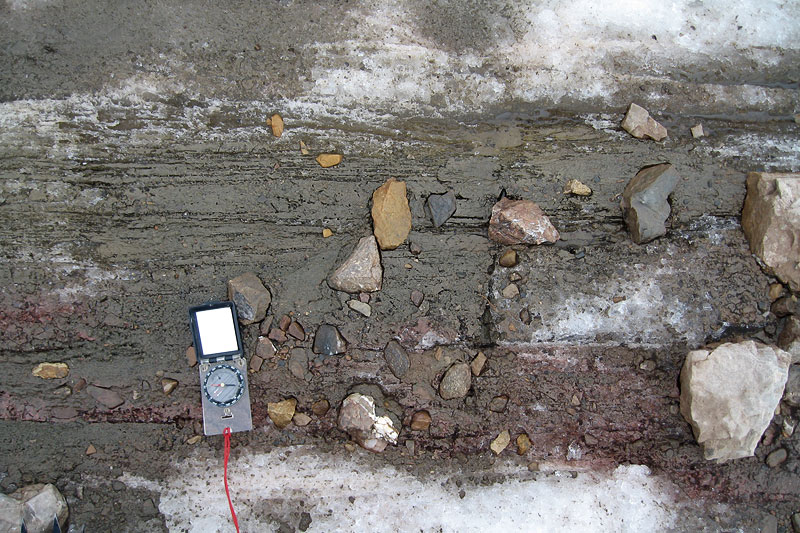 The debris entrained in some medial moraines is partially rounded, poorly sorted and of mixed lithology, suggesting the this material has originated from the bed, brought to the surface along shear zones within foliation or through folding (2009; MH). | 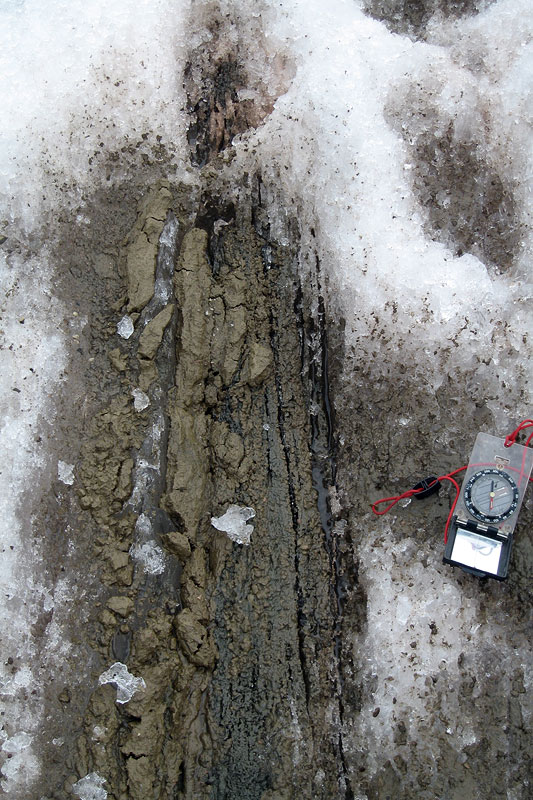 Fine-grained debris layer within foliation of basal affinity, again suggesting a link with the bed (2009; MH). |
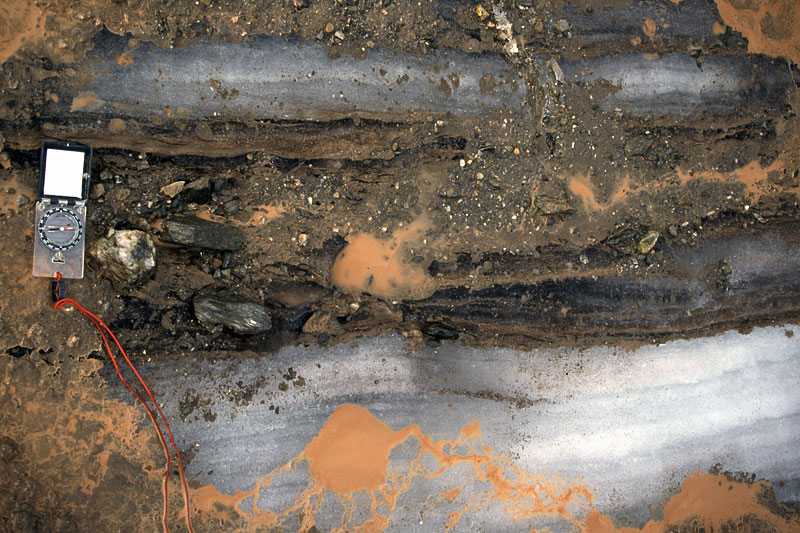 A zone of mixed mud and gravel clasts of basal derivation in a medial moraine. Melting ice is yielding orange coloured suspended silt (2001; MH). | 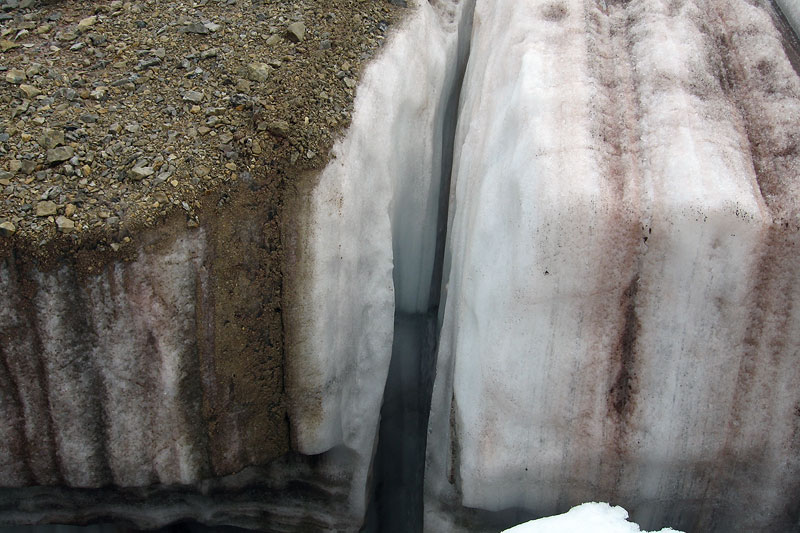 Differential weathering of clean and dirty ice in layers parallel to foliation, seen in the walls of a transverse stream channel, indicates how the debris penetrates deep into the ice (2009; MH). | 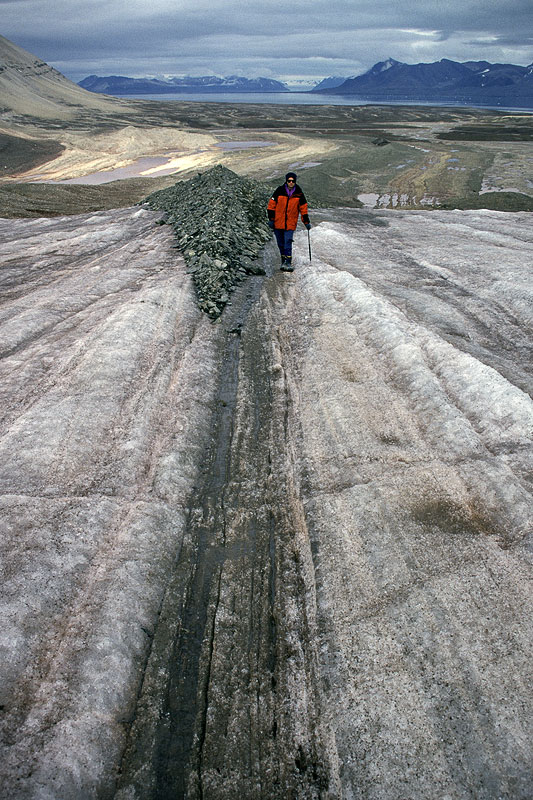 Another relationship between foliation and debris: The flanks of the ridge represent two opposing limbs of a fold structure, indicating initial burial of supraglacial debris (rockfall) and then folding during converging flow where ice from multiple basins joins together (1999; MH). | 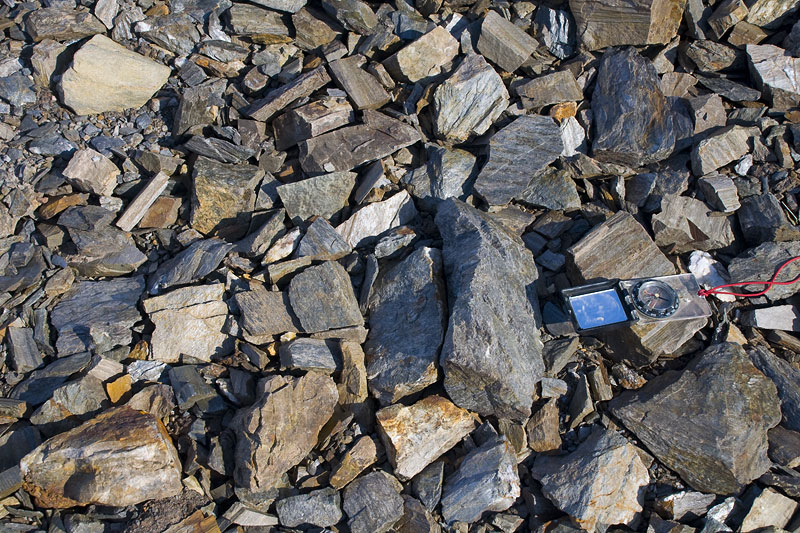 Close-up of supraglacial debris 1: angular metamorphic clasts of rockfall origin in a medial moraine (2009; MH). |
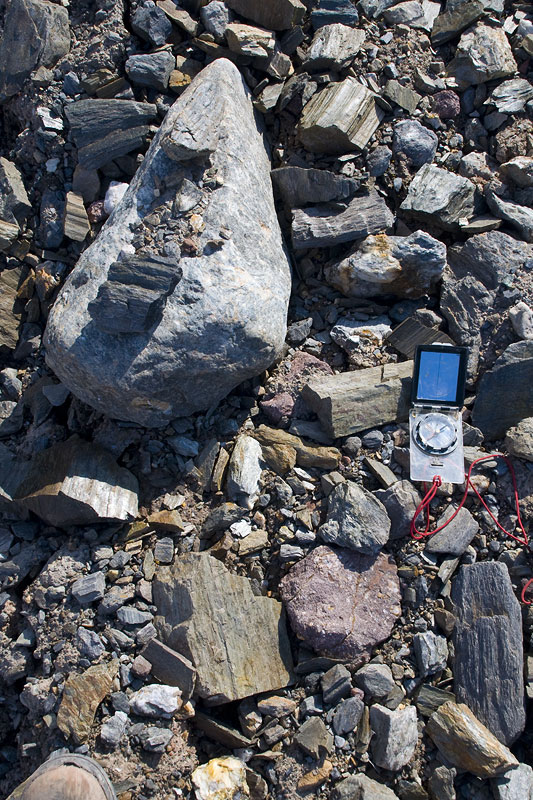 Close-up of supraglacial debris 2: mixed angular debris of rockfall origin and subangular debris of basal glacial origin in medial moraine (2009; MH). | 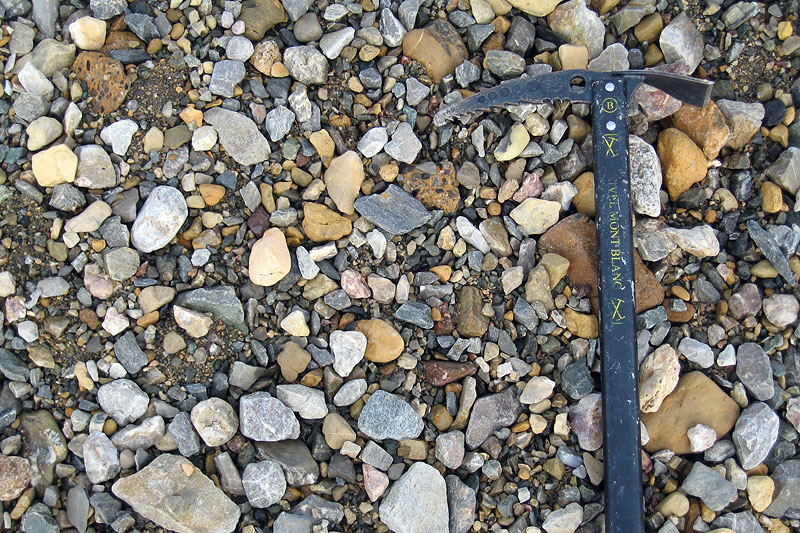 Close-up of supraglacial debris 3: subrounded well sorted gravel, resulting from deposition from prominent debris-laden supraglacial streams in mid-glacier (2009; MH). | 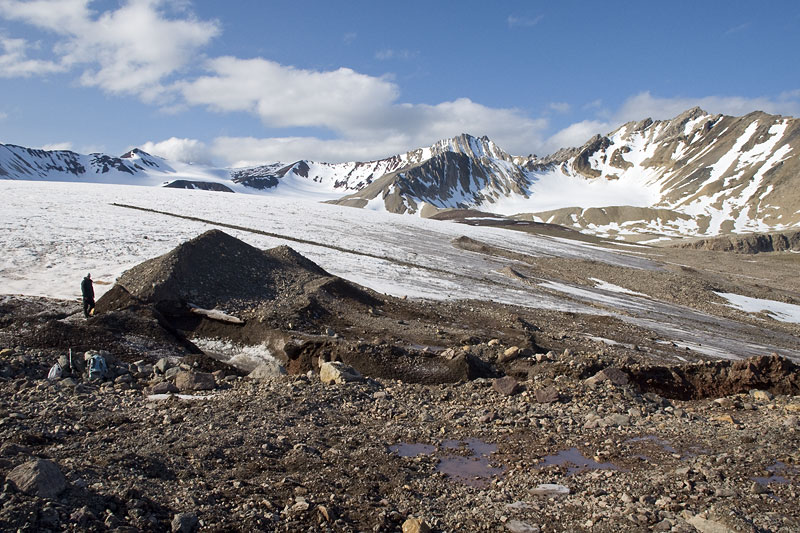 Large ridge of stratified well-sorted sand and gravel at the snout of Austre Brøggerbreen, probably derived from thrusting of glaciofluvial material from the bed of the glacier (2009; MH). | 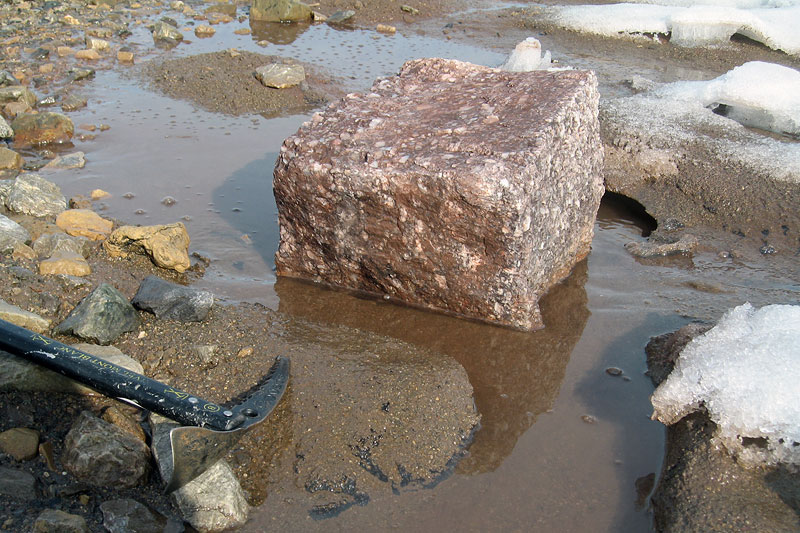 Unusual square block of red conglomerate (Carboniferous) in the middle reach of the glacier (2009; MH). |
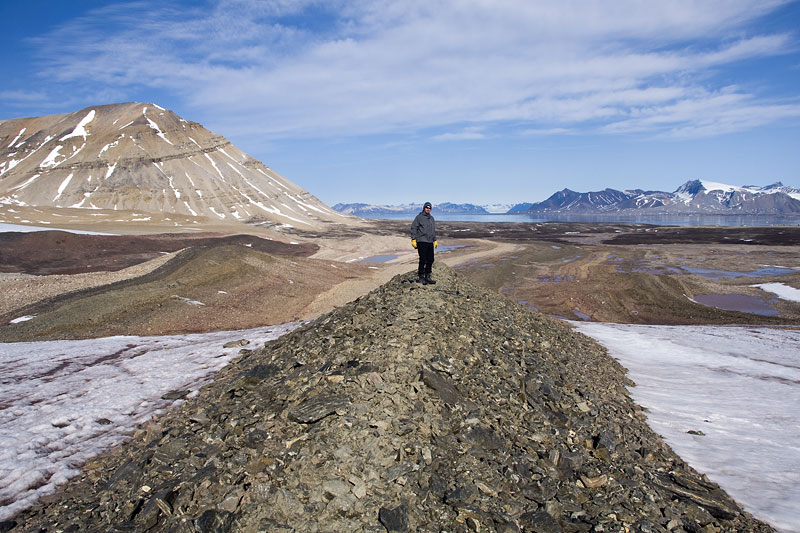 A medial moraine containing pale Carboniferous limestone formed by folding of rockfall material so that the moraine represents the fold hinge orientated parallel to ice flow (2009; MH). | 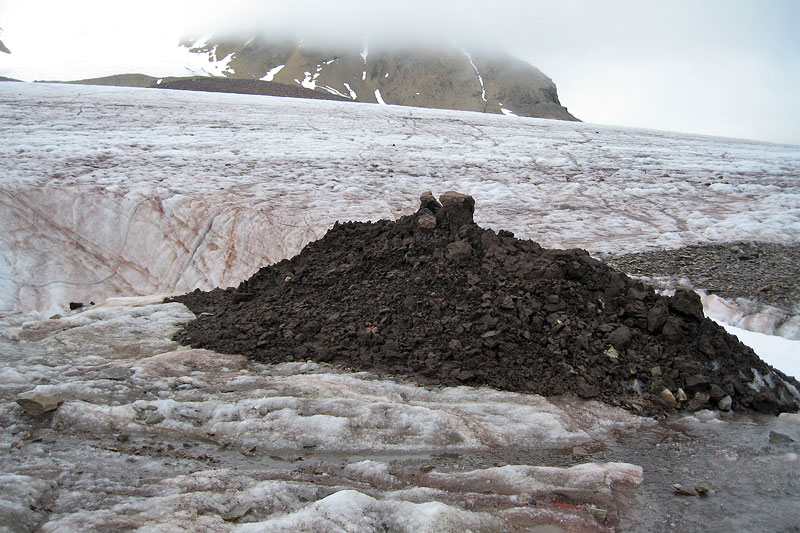 A series of black organic sand dirt cones are scattered across the glacier surface. They contain moss and twigs, but no connection with the bed was detected. We currently have no explanation for these features (2009; MH). | 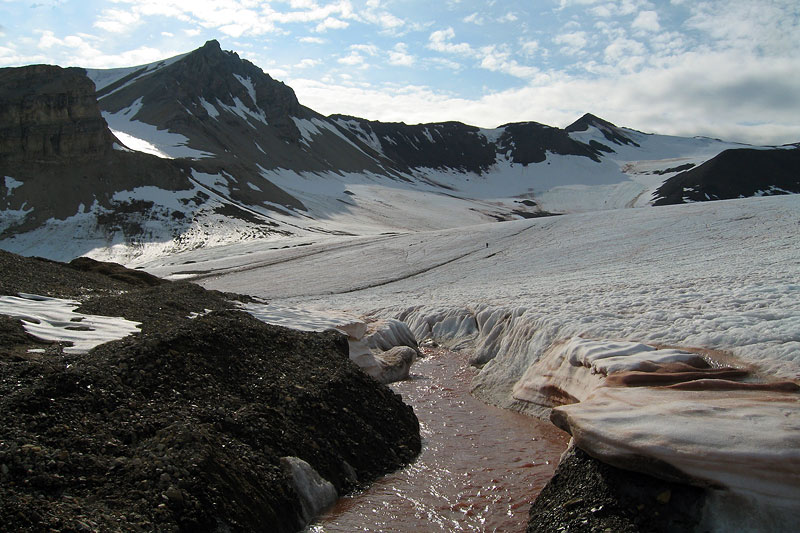 The next images shows the evolution of the drainage system: A supraglacial meltstream descends the main western arm of the glacier, the sediment derived from the adjacent slopes of reddish Carboniferous conglomerates. Note tiny figure of a person (2009; MH). | 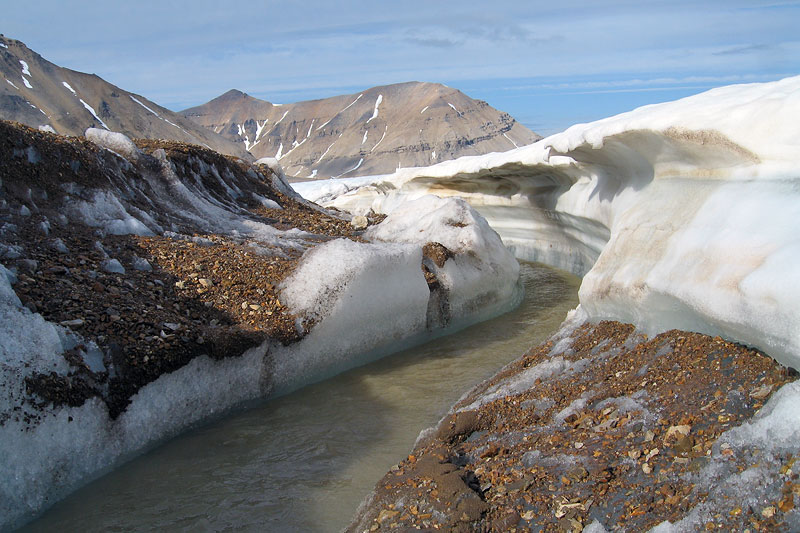 A deeply incised meltwater stream from the central accumulation basins of the glacier, where the grey suspended sediment is derived from metamorphic rocks (2009; MH). |
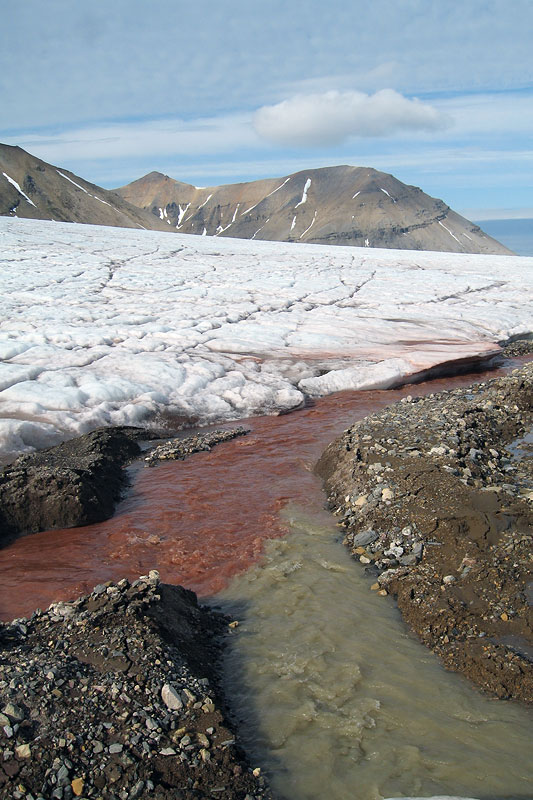 The previous two streams, when they converge, show contrasting colours, before the reddish one becomes dominant (2009; MH). | 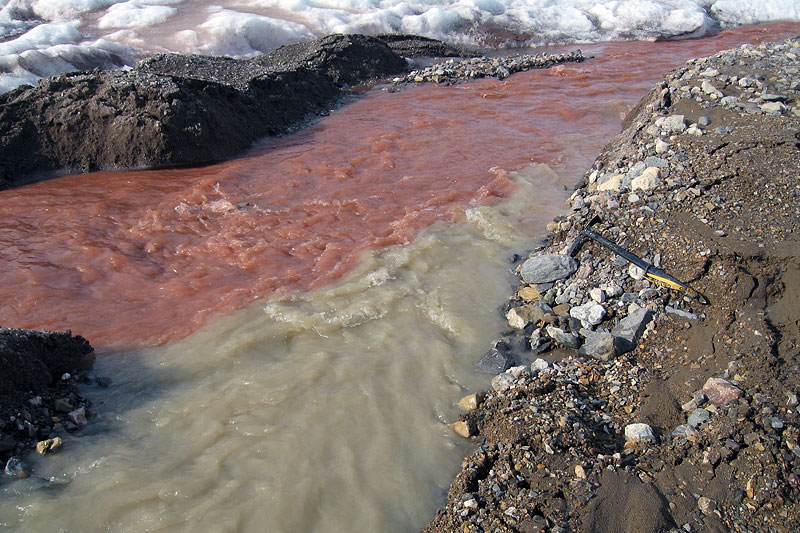 Close-up of the convergence of the two coloured streams, noting the dominance of the reddish one (2009; MH). | 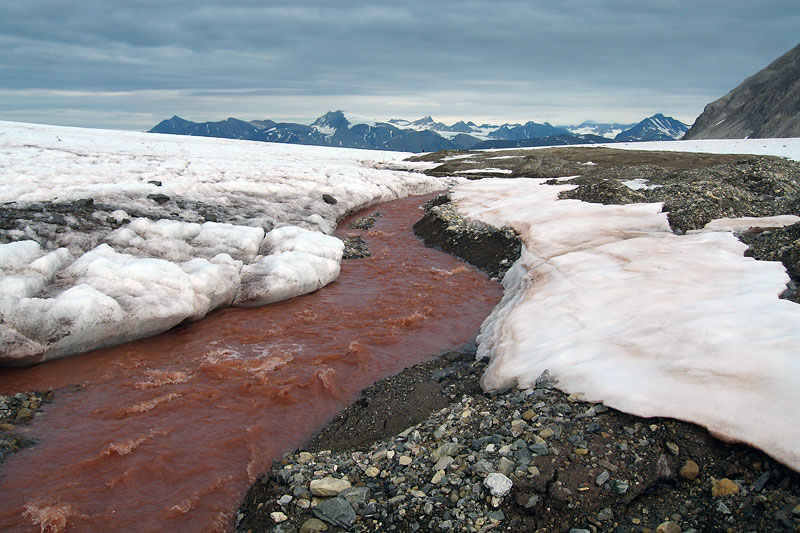 The combined stream is a broad channel that follows the low point in the glacier’s topography. For most of its length this stream forms an major obstacle to crossing the glacier (2009; MH). | 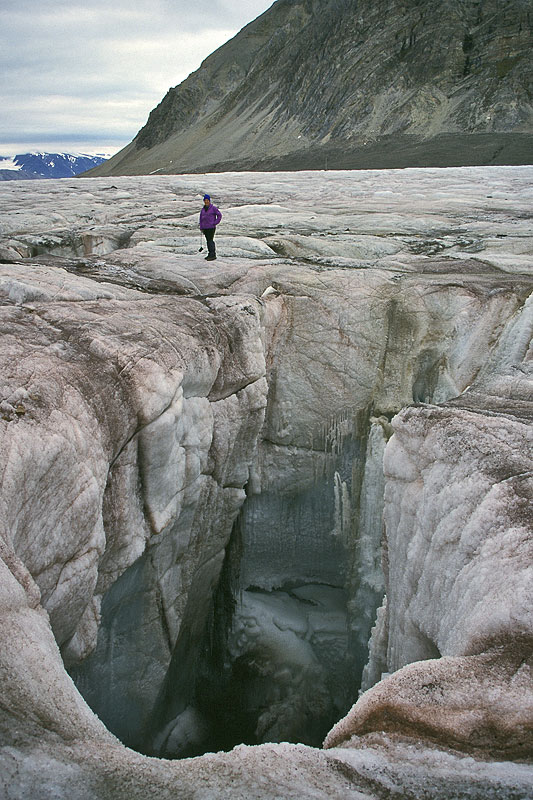 A low point in the glacier surface topography coincides with the site of several large moulins, one of which is shown here. These moulins swallow most of the supraglacial streams on this glacier, including that in the preceding photos (1999; MH). |
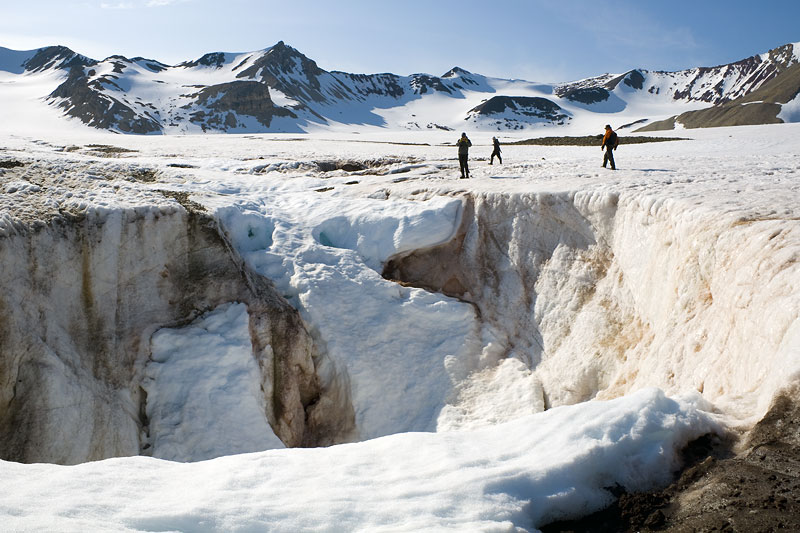 View of a large broad moulin, partly snow-filled, looking up-glacier (2009; MH). | 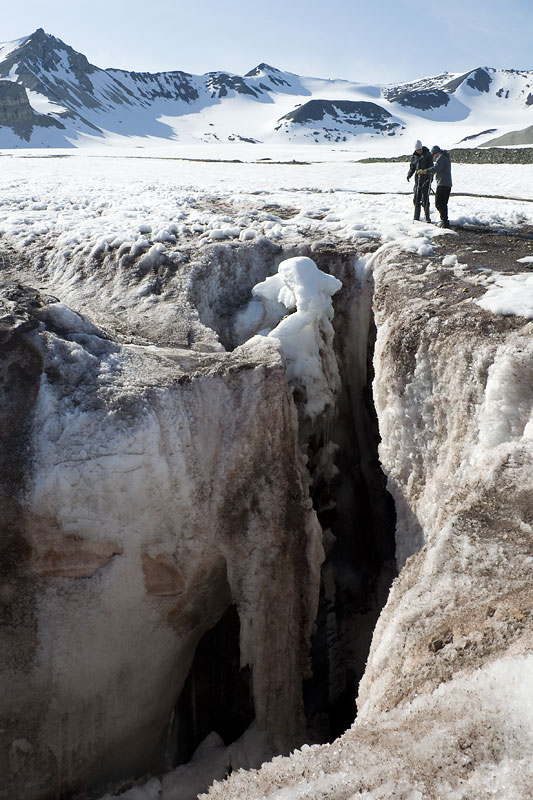 A third moulin, also partly snow filled in vertical format to emphasis the depth. These moulins have been explored by glacier speleologists, and are believed to reach the bed of the glacier (2009; MH). | 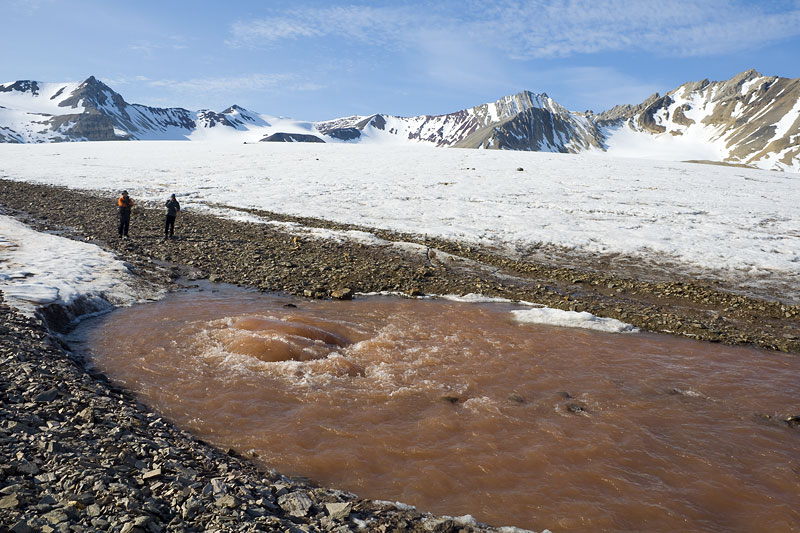 A major upwelling of reddish sediment-laden meltwater near the true right glacier margin. Probably waters comes from moulins, which then follow a diagonal path across the glacier bed, to emerge at the surface here (August 2009; MH). | 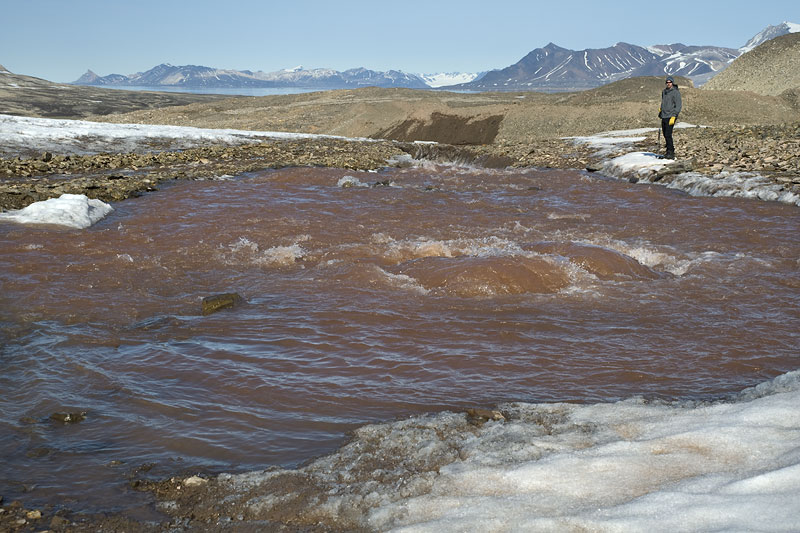 The upwelling near peak discharge, looking down glacier. The water discharging from the feature flows in a supraglacial channel for the remainder of its journey to the glacier snout (August 2009; MH). |
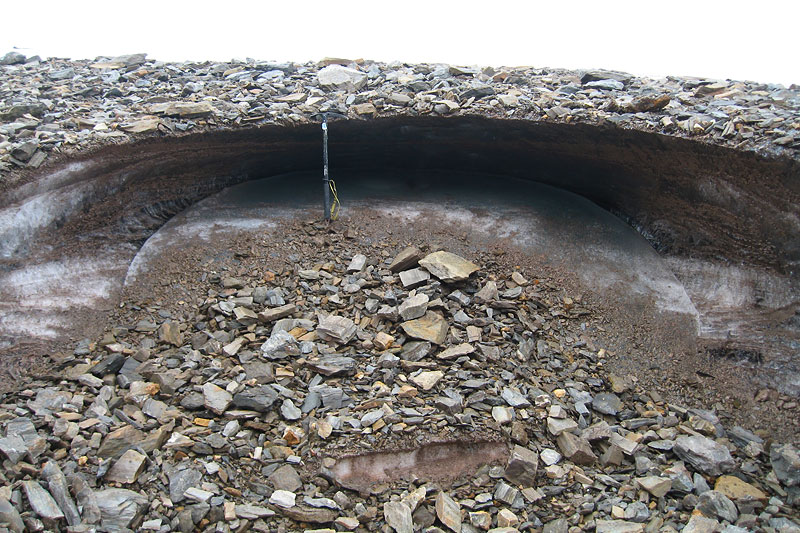 Near the 2009 upwelling was this dome-like mass of frozen water, surrounded by glacier ice. This is interpreted as an abandoned upwelling, possibly freezing up towards the end of the preceding melt-season (2009; MH). | 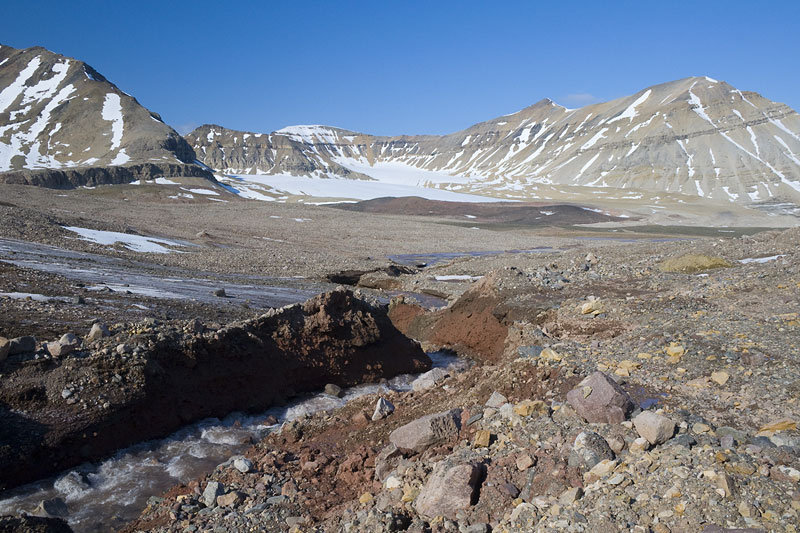 From the upwelling, the supraglacial stream progressively cuts down through the thin glacier to the bed and then flows along the ice margin for some distance. As it does so, the banks of reddish sediment collapse into the stream, enriching it further with bedload and suspended sediment (2009; MH). | 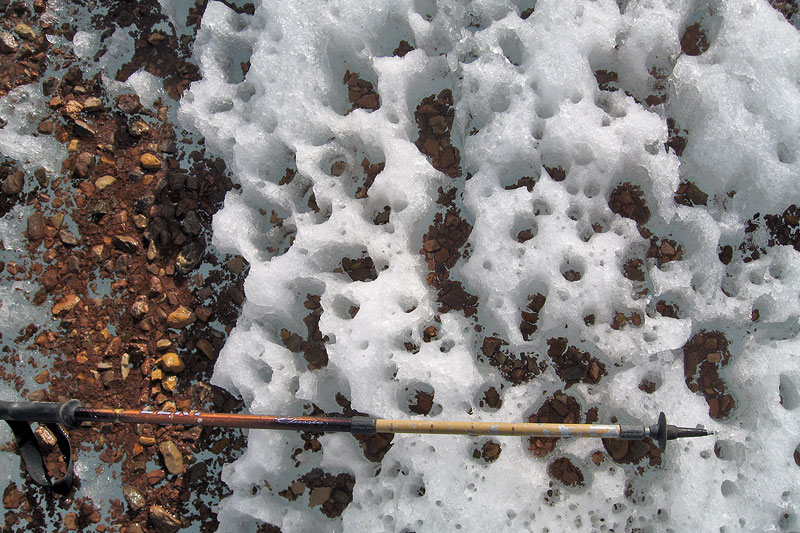 A final meltwater feature on the glacier is represented by cryoconite holes, which have a close relationship with debris and organic matter. They are a characteristic feature of the middle section of the glacier, where the ice is relatively clean (2009; MH). | 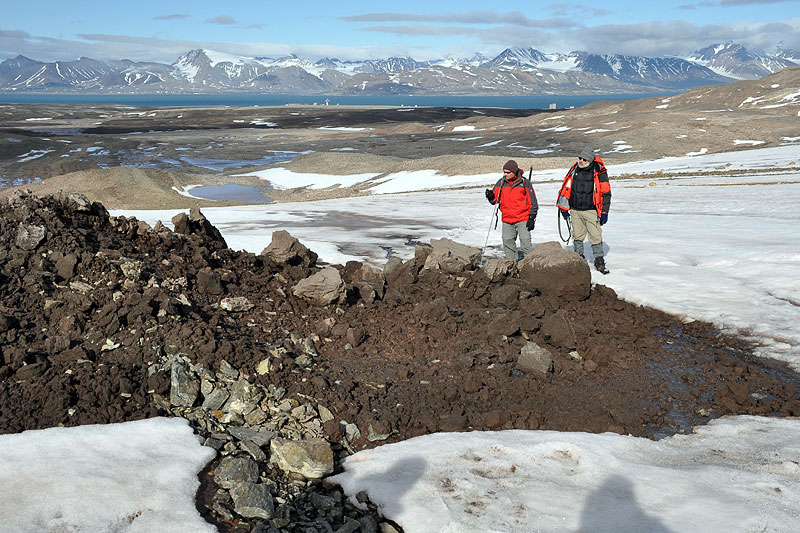 Glaciologists Duncan Quincey and Juerg Alean inspect a ridge of diamicton
cropping out at the surface of Austre Broggerbreen (2009; MH). |
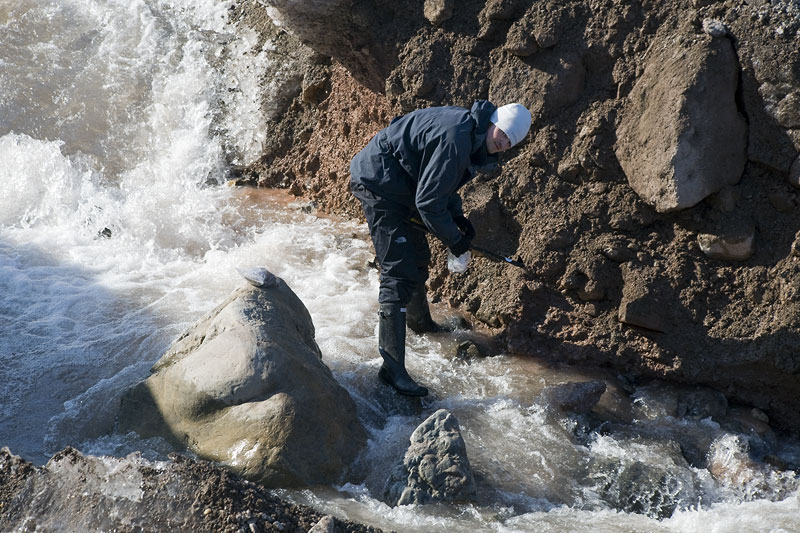 Another programme of research has been to examine the manner of debris transport in the glacier. Here, PhD student Richard Farnell of Aberystwyth University is sampling basal ice for isotopic analysis (2009; MH). | 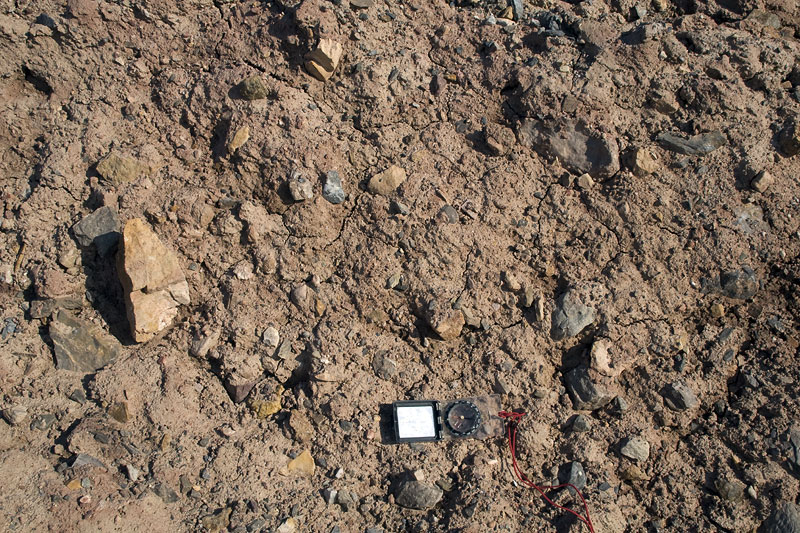 The main depositional product of Austre Brøggerbreen is a poorly sorted reddish sediment, called diamicton. Most of this material is deposited as a basal till, but some is reworked by sediment gravity flows or by thrusting in the glacier. | 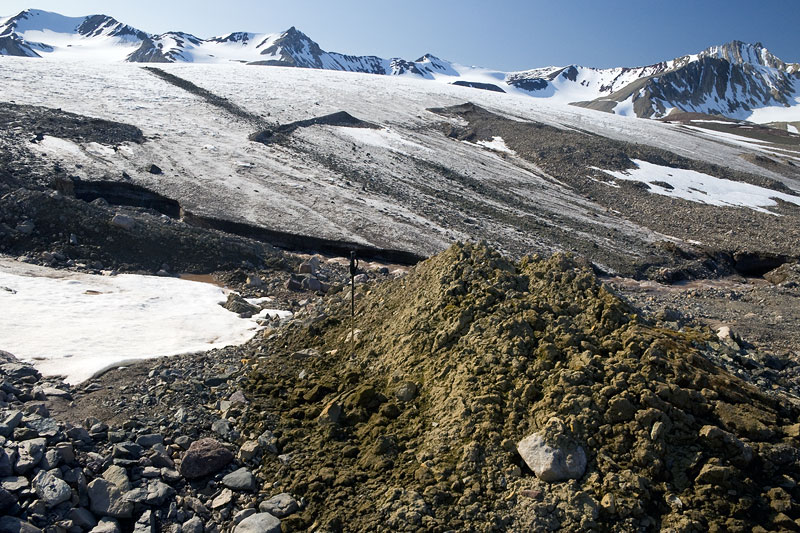 A ridge of diamicton in the proglacial zone of the glacier is a good indicator of thrusting when ice lay over the site (2009; MH). | 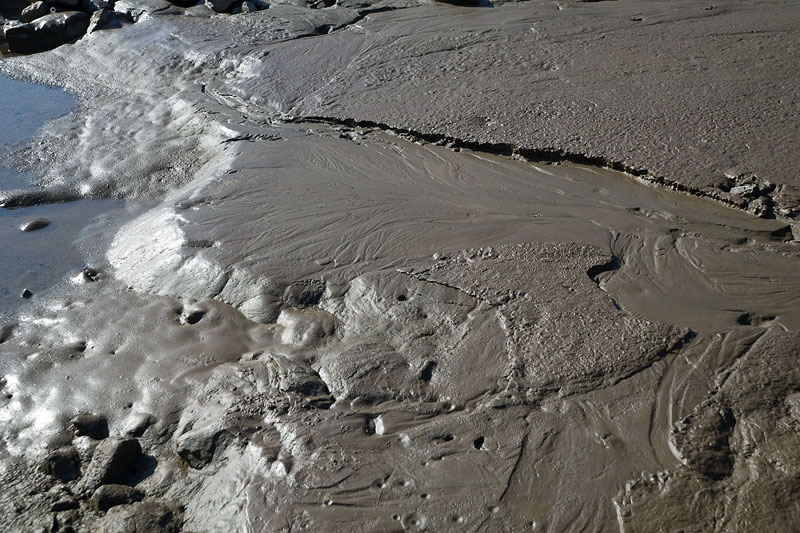 Various ponds and small streams, in addition to the main braided river channel in the proglacial zone show indications of sorting of sediment. Here, fines (mud) have been washed out of diamicton to form a miniature delta (2009; MH). |
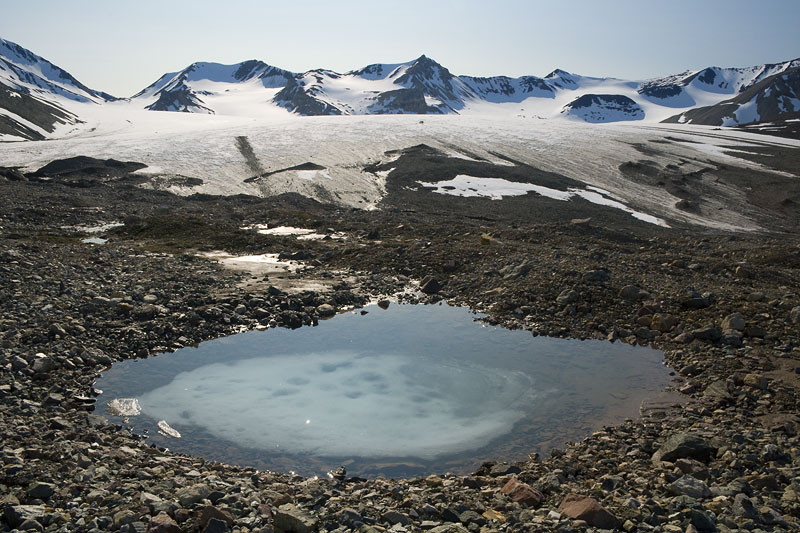 Scattered ponds in depressions in the proglacial area are clear signs that patches of dead glacier ice are slowly melting beneath the debris cover to form kettle holes (2009; MH). | 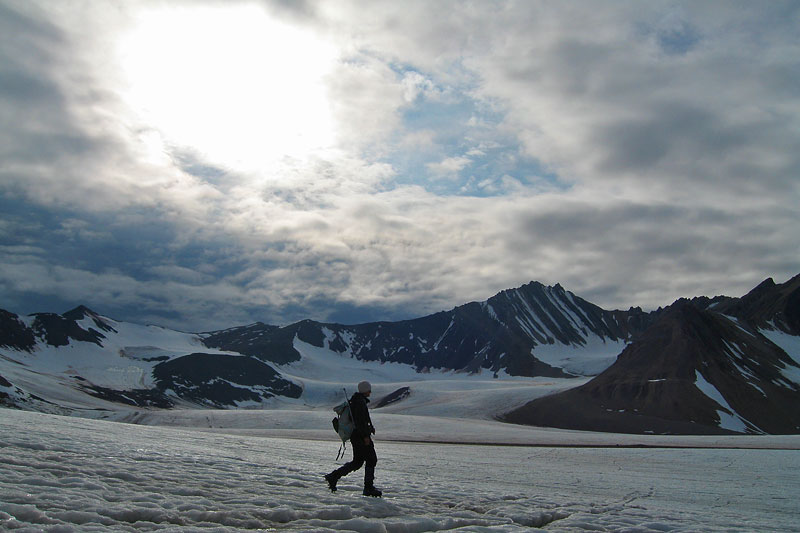 After the end of an interesting day on the glacier, a glaciologist descends the gentle tongue, and heads back to nearby Ny-Ålesund (2009; MH). | | |
|